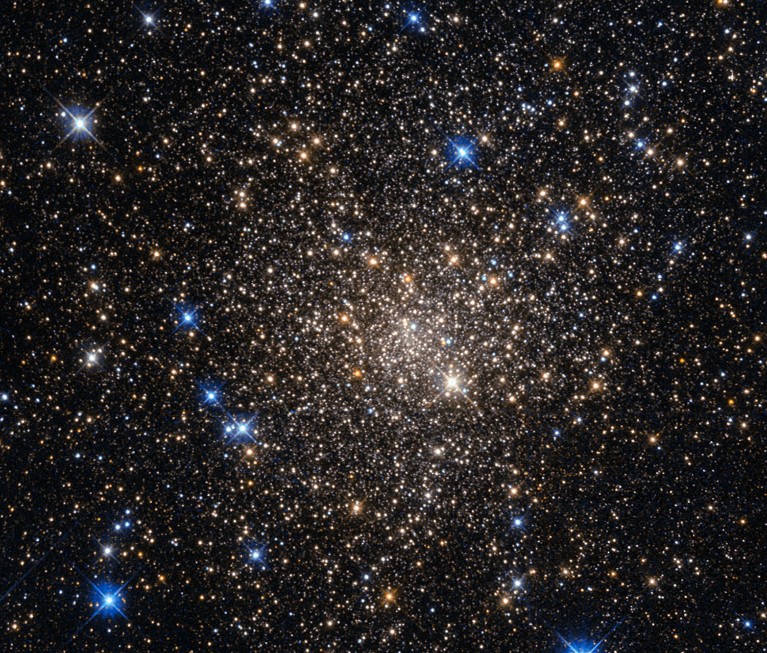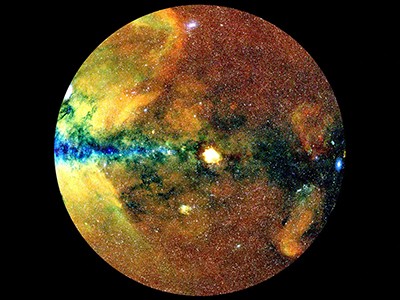[ad_1]

Observations of the current Universe suggest a faster rate of cosmic expansion than predictions based on early-Universe data.Credit: NASA/ESA/Judy Schmidt
Cosmology seems to be heading for a showdown on one of its most basic questions: how fast is the Universe expanding?
For more than a decade, two types of measurement have been in disagreement. Observations of the current Universe typically find the rate of expansion — called the Hubble constant — to be about 9% faster than predictions based on early-Universe data.
Mystery over Universe’s expansion deepens with fresh data
Researchers hoped that the James Webb Space Telescope (JWST), which launched in late 2021, would help to settle the question once and for all. But consensus has so far failed to materialise. Instead, two teams of cosmologists have calculated different values for the Hubble constant — despite both observing the recent Universe using the JWST.
Wendy Freedman, an astronomer at the University of Chicago in Illinois, and her collaborators presented preliminary results from their JWST observations today at a conference at the Royal Society in London. The Hubble constant they measured was 69.1 kilometers per second per megaparsec, meaning that galaxies separated by one million parsec (around 3 million light years) are receding from each other at a rate of 69.1 km/s.
This is only slightly larger than the 67 km/s per megaparsec predicted using early-universe data from Europe’s Planck satellite. But it is at odds with recent work by Adam Riess, an astrophysicist at Johns Hopkins University in Baltimore, Maryland, and his collaborators, who calculated a substantially higher Hubble constant, of at least 73 km/s per Mpc1,2,3.
Stars and supernovas
Freedman’s team analyzed three types of star that are used as distance indicators, or ‘standard candles’, in nearby galaxies. Understanding the average brightness of standard candles helps astronomers estimate how far away the same types of star are in more distant galaxies, which appear as they were billions of years ago. Together with observations of supernova explosions in the same galaxies, standard candles can be used to measure the Universe’s current rate of expansion.
Riess, whose observations were based on the same three types of star, warns that it is too early to draw conclusions from any of the JWST data. “The Hubble Space Telescope has collected a mountain of data over several decades, including four separate and direct calibrations of [the Hubble constant],” he says. “Our JWST programme and Wendy’s are tiny by comparison.”
This new map of the Universe suggests dark matter shaped the cosmos
It would be premature to comment on Freedman’s results because they have not yet been published, says Kristin McQuinn, an astronomer at Rutgers University in New Jersey who is leading her own study of standard candles with JWST. “It is hard to evaluate their results without seeing their data.”
Freedman says that multiple techniques will need to agree before the Hubble constant issue is solved. “We need more than one method, and we need more than three if we want to put this issue to rest,” she told delegates at the London meeting.
Cosmologist George Efstathiou, a leading member of the Planck collaboration who is based at the University of Cambridge, UK, sees the glass half full, saying that the latest JWST results are remarkably close to Planck’s. “They are 4 km/s away from each other, which is not a lot,“ he says.
Hiranya Peiris, a cosmologist also at the University of Cambridge, says that she wouldn’t be surprised if the recent-Universe observations were to end up converging towards the Planck early-Universe results. But she agrees that it will be crucial to add a completely new technique to the mix. Observations of gravitational waves could offer a ‘clean’ approach that doesn’t suffer from the confounding factors that are always present when observing stars, she adds.
If the discrepancy is here to stay, it could mean that the current theoretical model of the expansion of the Universe — which relies on Einstein’s general theory of relativity — needs to be amended. Theorists have been busy trying to find explanations for the Hubble-constant discrepancy, but none of them are compatible with every set of observations, says cosmologist Eleonora Di Valentino at the University of Sheffield, UK. “At least 500 models have been proposed, and none of them is satisfactory.”
[ad_2]
Source Article Link



